Overview of Phage Defense Systems in Bacteria and Their Applications
- PMID: 39769080
- PMCID: PMC11676413
- DOI: 10.3390/ijms252413316
Overview of Phage Defense Systems in Bacteria and Their Applications
Abstract
As natural parasites of bacteria, phages have greatly contributed to bacterial evolution owing to their persistent threat. Diverse phage resistance systems have been developed in bacteria during the coevolutionary process with phages. Conversely, phage contamination has a devastating effect on microbial fermentation, resulting in fermentation failure and substantial economic loss. Accordingly, natural defense systems derived from bacteria can be employed to obtain robust phage-resistant host cells that can overcome the threats posed by bacteriophages during industrial bacterial processes. In this review, diverse phage resistance mechanisms, including the remarkable research progress and potential applications, are systematically summarized. In addition, the development prospects and challenges of phage-resistant bacteria are discussed. This review provides a useful reference for developing phage-resistant bacteria.
Keywords: anti-phage mechanism; bacteria; phage.
Conflict of interest statement
The authors declare that they have no conflicts of interest.
Figures


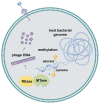
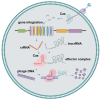
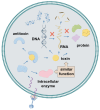
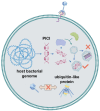
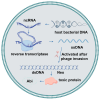


Similar articles
-
Overcoming Bacteriophage Contamination in Bioprocessing: Strategies and Applications.Small Methods. 2025 Mar;9(3):e2400932. doi: 10.1002/smtd.202400932. Epub 2024 Oct 2. Small Methods. 2025. PMID: 39359025 Review.
-
Deploying Viruses against Phytobacteria: Potential Use of Phage Cocktails as a Multifaceted Approach to Combat Resistant Bacterial Plant Pathogens.Viruses. 2022 Jan 18;14(2):171. doi: 10.3390/v14020171. Viruses. 2022. PMID: 35215763 Free PMC article. Review.
-
Phage therapy for respiratory infections.Adv Drug Deliv Rev. 2018 Aug;133:76-86. doi: 10.1016/j.addr.2018.08.001. Epub 2018 Aug 7. Adv Drug Deliv Rev. 2018. PMID: 30096336 Free PMC article. Review.
-
Microbial Arsenal of Antiviral Defenses. Part II.Biochemistry (Mosc). 2021 Apr;86(4):449-470. doi: 10.1134/S0006297921040064. Biochemistry (Mosc). 2021. PMID: 33941066 Review.
-
A game of resistance: War between bacteria and phages and how phage cocktails can be the solution.Virology. 2024 Nov;599:110209. doi: 10.1016/j.virol.2024.110209. Epub 2024 Aug 15. Virology. 2024. PMID: 39186863 Review.
Cited by
-
Recent insights on challenges encountered with phage therapy against gastrointestinal-associated infections.Gut Pathog. 2025 Aug 11;17(1):60. doi: 10.1186/s13099-025-00735-y. Gut Pathog. 2025. PMID: 40790209 Free PMC article. Review.
-
Deciphering the Causes of IbfA-Mediated Abortive Infection in the P22-like Phage UAB_Phi20.Int J Mol Sci. 2025 May 20;26(10):4918. doi: 10.3390/ijms26104918. Int J Mol Sci. 2025. PMID: 40430055 Free PMC article.
References
-
- Martínez-Borra J., González S., López-Larrea C. The origin of the bacterial immune response. Adv. Exp. Med. Biol. 2012;738:1–13. - PubMed
Publication types
MeSH terms
Grants and funding
LinkOut - more resources
Full Text Sources
Research Materials

